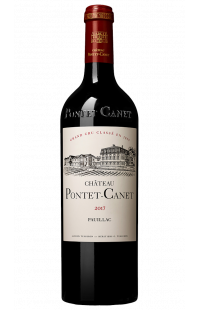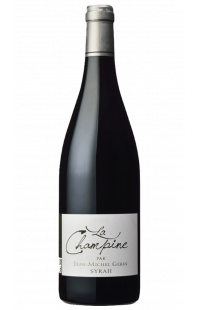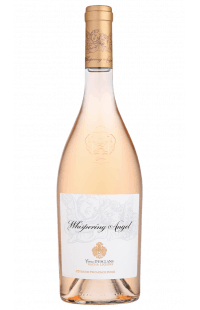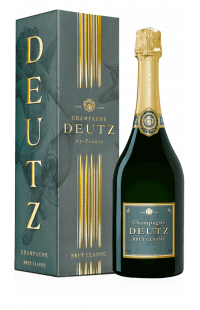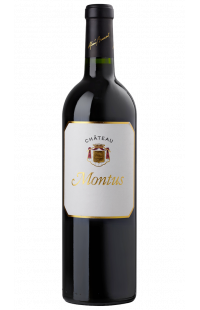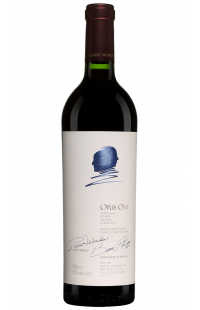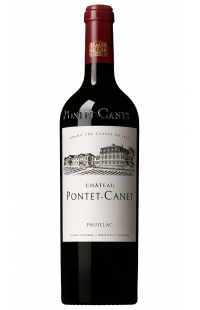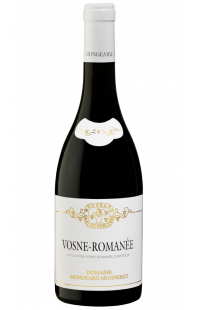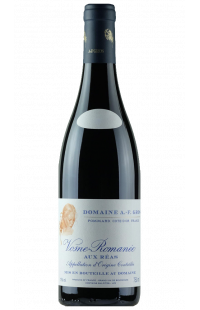- Menu
- All our wines
- Bordeaux
-
Rhône
-
Burgundy
-
Rosés Wines
-
Champagne
- France
-
World
- PRIMEURS
- Organic Wines
Vosnes-Romanée wines
The Wines of Vosne-Romanée
Introduction to the Wines of Vosne-Romanée
The wines of Vosne-Romanée are among the most prestigious in Burgundy, renowned for their finesse, elegance, and complexity. Located in the Côte de Nuits, this appellation produces exclusively red wines and does not produce any whites. Often considered the finest examples of Pinot Noir, Vosne-Romanée wines result from an exceptional terroir and winemaking expertise passed down through generations.
History of Vosne-Romanée Wines
Ancient Origins
The village of Vosne-Romanée, first mentioned in 725 under the name "Vosnum," has become a renowned wine-producing center over the centuries. Wine production in Vosne-Romanée dates back to the Middle Ages, with a reputation solidly established by the 18th century.
Evolution and Renown
The notoriety of Vosne-Romanée wines continued to grow, attracting the attention of wine enthusiasts worldwide. Viticultural techniques were refined, allowing the production of exceptional quality wines known for their red and black fruit aromas, firm tannins, and beautiful acidity.
The 14 Premier Crus of Vosne-Romanée
General Presentation
Vosne-Romanée boasts 14 Premier Crus, all exclusively red wines. Among the most famous are crus like Les Beaux Monts, Les Suchots, and Les Malconsorts, each offering unique characteristics and a distinct expression of the Vosne-Romanée terroir.
Characteristics of the Premier Crus
- Les Beaux Monts: A full-bodied wine with notes of red fruits and marked minerality.
- Les Suchots: Balanced, with intense aromas of cherry and raspberry.
- Les Malconsorts: Complex, with powerful tannins and a long finish.
The Grands Crus of Vosne-Romanée
Romanée-Conti
The most famous Grand Cru of Vosne-Romanée, Romanée-Conti, is often considered the pinnacle of Burgundy wines. With limited production, each bottle is a treasure, offering deep aromas of dark fruits, truffle, and undergrowth.
Other Grands Crus
- Richebourg: Powerful and structured, with notes of blackberry and blackcurrant.
- Echezeaux: Fine and elegant, with aromas of red fruits and a hint of spice.
- Grands Echezeaux: More structured than Echezeaux, with firm tannins and great depth.
- La Romanée: Intense, with floral notes and great purity of fruit.
The Terroir of Vosne-Romanée
Geology and Climate
The terroir of Vosne-Romanée consists mainly of limestone and clay-limestone soils, ideal for cultivating Pinot Noir. The region's continental climate, with warm summers and cold winters, contributes to the optimal ripening of the grapes.
Viticulture and Winemaking
Vosne-Romanée winemakers employ meticulous viticultural practices, such as precise pruning and yield management, to ensure the highest possible quality. Winemaking is often traditional, with fermentation in oak barrels and extended aging to develop the wines' complexity and depth.
Tasting and Food Pairings
Tasting Profile
Vosne-Romanée wines are known for their perfect balance between richness and tannins. On the palate, they are full-bodied with a velvety texture that develops with aging, revealing aromas of ripe fruits, spices, and undergrowth.
Food Pairings
These wines pair wonderfully with rich and savory dishes such as beef bourguignon, roast duck, and aged cheeses. Their tannic structure and aromatic complexity also make them an excellent choice to accompany mushroom and truffle-based dishes.
Vosne-Romanée Wines in the World
International Reputation
Vosne-Romanée wines enjoy an international reputation and are prized by collectors and wine enthusiasts worldwide. Their rarity and exceptional quality make them highly sought after, with some bottles fetching record prices at auctions.
Export and Consumption
A significant portion of Vosne-Romanée's production is exported, with particularly strong demand in North America and Asia. Wine lovers appreciate these wines' ability to age gracefully, developing more complex flavors and aromas over time.
The Vosne-Romanée Wine Market
Price Evolution
Prices for Vosne-Romanée wines have seen a significant increase over the past decades due to growing demand and the wines' scarcity. Grands Crus, in particular, are highly sought after and can reach very high prices.
Investment and Collection
Investing in Vosne-Romanée wines is considered a wise decision by many collectors, as these wines maintain their value well and can even appreciate over time. Enthusiasts seek exceptional vintages and renowned producers to complete their collections.
Conclusion
Vosne-Romanée wines represent the very essence of Burgundy, with their elegance, complexity, and ability to age beautifully. Whether for personal tasting or as an investment, these wines continue to captivate wine lovers worldwide with their unmatched quality and rich history.
FAQs
What are the main grape varieties used in Vosne-Romanée wines? Vosne-Romanée wines are exclusively produced from the Pinot Noir grape variety.
How many Premier Crus are there in Vosne-Romanée? There are 14 Premier Crus in Vosne-Romanée, all producing red wines.
What is the most famous Grand Cru of Vosne-Romanée? Romanée-Conti is the most famous Grand Cru of Vosne-Romanée.
What types of soils are found in Vosne-Romanée? The soils of Vosne-Romanée are primarily limestone and clay-limestone.
How do Vosne-Romanée wines compare to those from Gevrey-Chambertin? Vosne-Romanée wines are often compared to those of Gevrey-Chambertin but are generally finer and more elegant, with a softer tannic structure.
What is the best way to enjoy a Vosne-Romanée wine? Vosne-Romanée wines are best enjoyed after a few years of aging, accompanied by rich and savory dishes such as beef bourguignon or roast duck.
What makes Vosne-Romanée wines so special? Vosne-Romanée wines are special due to their unique terroir, rich history, and ability to combine finesse, complexity, and longevity.
Why are Vosne-Romanée wines so expensive? Vosne-Romanée wines are expensive because of their exceptional quality, rarity, and high global demand.
How do Vosne-Romanée wines age? Vosne-Romanée wines age beautifully, developing more complex aromas and a smoother texture over the years.
What are the best vintages of Vosne-Romanée? The best vintages of Vosne-Romanée vary, but exceptional years often include 2005, 2010, and 2015, among others.
What is the difference between Premier Crus and Grands Crus of Vosne-Romanée? Grands Crus of Vosne-Romanée, such as Romanée-Conti and Richebourg, are considered the highest quality levels, with deeper and more complex characteristics, while Premier Crus, though still excellent, are slightly below in terms of prestige and price.
How should Vosne-Romanée wines be served? Vosne-Romanée wines should be served at a temperature of 16-18°C (61-64°F) to allow their aromas to fully express themselves. They also benefit from decanting to aerate before tasting.
Which dishes pair well with Vosne-Romanée wines? Vosne-Romanée wines pair well with red meats, roasted poultry, mushroom-based dishes, and aged cheeses.
Are Vosne-Romanée wines suitable for aging? Yes, Vosne-Romanée wines are renowned for their ability to age well, developing more complex flavors and aromas over time.
What are the typical characteristics of Vosne-Romanée wines? Vosne-Romanée wines are generally full-bodied, with a velvety texture, aromas of red and black fruits, firm tannins, and good acidity.
Which are the most renowned wineries in Vosne-Romanée? Among the most renowned domains are Domaine de la Romanée-Conti, Domaine Leroy, and Domaine Méo-Camuzet, each producing wines of exceptional quality.
When is the best time to visit Vosne-Romanée? The best time to visit Vosne-Romanée is during the harvest in September, when you can see the work in the vineyards and participate in wine tastings.
How are Vosne-Romanée wines produced? Vosne-Romanée wines are produced following traditional viticultural practices, with particular attention to pruning, yield management, and fermentation in oak barrels.
Why are Vosne-Romanée wines so renowned? Vosne-Romanée wines are renowned for their exceptional terroir, rich history, and ability to produce wines of unparalleled complexity and finesse.
How can you recognize a good Vosne-Romanée wine? A good Vosne-Romanée wine is distinguished by its deep color, complex aromas of red and black fruits, balanced tannic structure, and ability to evolve favorably over time.
What is the future of Vosne-Romanée wines? The future of Vosne-Romanée wines looks promising, with continued demand for these high-quality wines and growing recognition of their exceptional value on the international stage.
What are the current challenges for Vosne-Romanée producers? Producers face challenges such as climate change, yield management, and preserving quality in the context of growing global demand.
Conclusion
In conclusion, Vosne-Romanée wines are jewels of Burgundian viticulture, offering a unique combination of finesse, complexity, and longevity. Whether for immediate tasting or extended aging, these wines continue to captivate and seduce enthusiasts worldwide with their exceptional quality and rich history.
